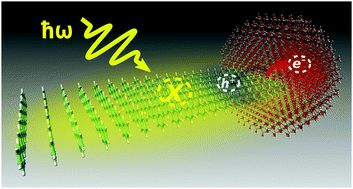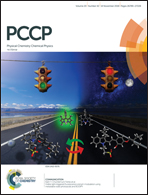Charge separation at an organic/inorganic nano-hybrid interface: atomistic simulations of a para-sexiphenyl ZnO system
Abstract
A prototypical organic/inorganic interface is considered which is formed by vertical stacking of 20 para-sexiphenyl molecules physisorbed on a ZnO nano-cluster of 3903 atoms. Charge separation kinetics at the interface are investigated for their dependence on ultrafast optical excitation. In order to analyze the spatio-temporal evolution of the Frenkel exciton in the organic part and the formation of charge separated states a first principles parameterized Hamiltonian is introduced and the related time-dependent Schroedinger equation is solved. By determining the interface absorption spectrum the optically addressable states can be uncovered. The work continues our previous studies of J. Phys. Chem. Lett., 2018, 9, 209, but with a changed type of surface passivation. This prevents trapping of electrons close to the surface. Charge separated states are formed by direct optical excitation and also by exciton decay at the interface. Electron migration away from the interface into bulk regions becomes possible. The hole stays close to the interface for all excitation scenarios. Finally, it is demonstrated that energetic disorder is of minor influence.

- This article is part of the themed collection: 2018 PCCP HOT Articles


 Please wait while we load your content...
Please wait while we load your content...